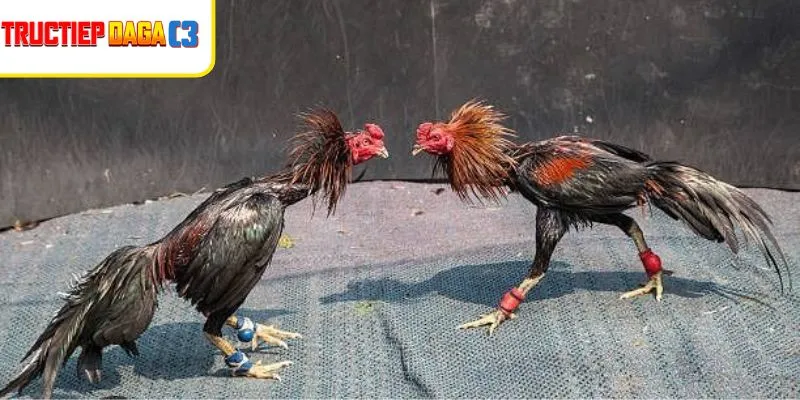ALO789 – Trang Đăng Ký Chơi Đá Gà Thomo Chính Thức 2024
ALO789 không chỉ nổi bật với tính hợp pháp mà còn với nhiều ưu điểm vượt trội khác. Như hệ thống nạp – rút tiền nhanh chóng hỗ trợ tất cả các ngân hàng lớn tại Việt Nam, có nhiều chương trình khuyến mãi hấp dẫn, dịch vụ chăm sóc khách hàng tận tâm. Tất cả những điều này khiến ALO789 trở thành lựa chọn hàng đầu cho những ai muốn tìm kiếm một nền tảng cá cược đáng tin cậy và chất lượng.
Đối tác của chúng tôi: SV388 | GA6789
Tìm hiểu tổng quan về ALO789
ALO789 là một trong những địa chỉ uy tín, phổ biến trong lĩnh vực cá cược đá gà Thomo tại Việt Nam. Nơi đây đã được PAGCOR – cơ quan quản lý giải trí và cá cược tại Philippines – cấp phép hoạt động. Điều này cam kết tính hợp pháp, minh bạch, an toàn cho người chơi.
Nền tảng này nổi bật với hệ thống bảo mật tiên tiến, các phương thức thanh toán đa dạng, hỗ trợ nhanh chóng từ các ngân hàng lớn tại Việt Nam. Ngoài ra, nền tảng còn luôn cập nhật các mã khuyến mãi hấp dẫn, cung cấp dịch vụ chăm sóc khách hàng tận tình, giúp người chơi trải nghiệm môi trường cá cược đáng tin cậy, thú vị nhất.
Với những lợi thế này, đây chính là địa chỉ tin cậy mà còn là điểm đến lý tưởng cho những ai đam mê, thích thử vận may trong các trận đấu đá gà trực tuyến. ALO789 không chỉ đơn thuần là một nền tảng cá cược, mà còn là một hệ sinh thái hoàn chỉnh mang đến trải nghiệm đáng giá cho người chơi.

Tổng hợp các hình thức đá gà phổ biến tại ALO789
Tại ALO789, những người yêu thích các trận đấu đá gà trực tuyến không chỉ có cơ hội tham gia vào những trận chiến hấp dẫn mà còn được trải nghiệm nhiều hình thức đá gà phong phú, đa dạng. Hãy cùng tìm hiểu các loại hình thức đá gà phổ biến mà nhà cái này cung cấp.
Gà đá cựa sắt cực hấp dẫn
Gà đá cựa sắt thu hút người chơi bởi tính kịch tính, gay cấn trong từng trận đấu. Đây là nơi các con gà được trang bị cựa sắt, thể hiện sự dũng mãnh, sắc bén qua từng đòn ra vào. Mỗi trận đấu đều mang đến cho người chơi không khí cực kỳ sống động và giúp thỏa mãn đam mê thử thách, đấu trí của họ.
Đá gà cựa dao siêu thú vị tại ALO789
Đá gà cựa dạo là một trong những hình thức giải trí đặc sắc, thu hút đông đảo người chơi bởi tính chất hấp dẫn, kịch tính của các cuộc đối đầu. Tại đây, các con gà được huấn luyện tinh nhuệ, khéo léo, sẵn sàng tham gia vào những trận chiến nảy lửa.
Những pha cựa dao nhanh nhẹn, những cú nhảy dựng đứng và những đòn móc hay phản đòn xuất sắc của các con gà khiến cho mỗi trận đấu trở nên thú vị, căng thẳng đến từng khoảnh khắc. Đá gà cựa dạo không chỉ là một sân chơi giải trí mà còn là nơi thể hiện sự khéo léo, tinh thần chiến đấu, kỹ năng của những con gà tài ba.
Đá gà cựa tròn với mức sát thương cực mạnh
Đá gà cựa tròn tại ALO789 là một hình thức đặc biệt trong các trận đấu, nổi bật với mức sát thương cực mạnh. Trận đấu diễn ra với sự quyết liệt của các gà chiến, mỗi con được trang bị cựa tròn sắc bén, khả năng giao chiến mạnh mẽ. Đây là một thử thách đối với những người chơi đam mê sự hồi hộp, với mỗi pha cựa gà quyết định, từng phút giây mang đến những cảm xúc mãnh liệt, thú vị.

Ưu điểm nổi bật chỉ có tại ALO789
Được biết đến là một trong những nền tảng cá cược uy tín, phát triển mạnh mẽ, nơi đây không chỉ đem đến cho người chơi những trải nghiệm đặc sắc trong đá gà trực tuyến mà còn mang đến nhiều lợi ích hấp dẫn khác. Hãy cùng tìm hiểu về những ưu điểm nổi bật khi tham gia cá cược.
Nhiều chương trình khuyến mãi hấp dẫn
Nơi đây thường xuyên tổ chức các sự kiện đặc biệt như quay số may mắn, Giải đấu thể thao hàng tuần với giải thưởng lớn. Không chỉ vậy, người chơi còn được tham gia vào các chương trình khuyến mãi sinh nhật, khuyến mãi hàng ngày,….. Điều này tạo ra sự hào hứng, khuyến khích người chơi thường xuyên quay lại ALO789 để trải nghiệm thêm nhiều lợi ích khác nhau.

Tốc độ nạp tiền, rút tiền cực nhanh chóng
Tốc độ nạp rút tiền tại đây là một trong những yếu tố nổi bật, mang lại sự tiện lợi, hài lòng cho người chơi. Với hệ thống thanh toán nhanh chóng và linh hoạt, người chơi có thể thực hiện giao dịch nạp tiền từ các ngân hàng lớn như Vietcombank, Techcombank, ACB, VietinBank một cách nhanh chóng, chỉ trong vài phút.
Quá trình này không chỉ đảm bảo tính tiện lợi mà còn giúp người chơi không phải chờ đợi lâu để bắt đầu trải nghiệm các trận đấu đá gà. Đối với việc rút tiền, nhà cái cũng cam kết cung cấp dịch vụ nhanh chóng, an toàn, đem lại sự đáng tin cậy cho người chơi.
Kết luận
ALO789 là nơi không chỉ đem đến những trận đấu đá gà kịch tính, mà còn là một điểm đến thú vị, hấp dẫn cho những ai yêu thích sự hồi hộp của cá cược trực tuyến. Hãy khám phá và tham gia để trải nghiệm không gian giải trí đỉnh cao tại ALO789 ngay hôm nay!









